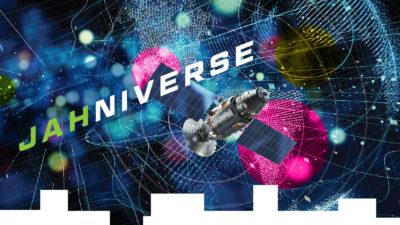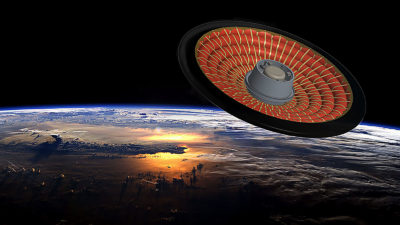Train ’em. Trust ’em. Set ’em loose.
By Debra Werner|January 2023
Since the Apollo program concluded 50 years ago, NASA’s astronaut corps has accumulated thousands of hours of flight time in low-Earth orbit. As the agency now prepares to send astronauts back to the moon under the Artemis program, Apollo veterans told Debra Werner that a new set of skills — and a new mindset — may be needed.
In the five decades since the last Apollo mission, NASA astronauts have performed impressive feats. In the 1970s aboard Skylab, NASA’s first space station, they conducted scientific research in low-Earth orbit at altitudes of 400 kilometers. Over 30 years of space shuttle flights, astronauts repaired and upgraded the Hubble Space Telescope, constructed the International Space Station and showed the promise of microgravity for making materials and conducting research in the biological and physical sciences. In fact, since ISS was completed in 2000, astronauts have continuously inhabited the football-field-size structure, all while launching dozens of satellites from the station, bolstering knowledge of Earth and the solar system, and demonstrating the promise and downside of long-term human spaceflight.
Despite the successes, those LEO spaceflights are very different than operating on the lunar surface some 384,000 kilometers away, as new astronauts and veterans of ISS must do under the Artemis moon program.
“By the time you get to the moon, the quickest you could get home is three to four days,” says Gerald D. Griffin, lead flight director for Apollo 17. “To put that in context, at the ISS in low-Earth orbit, you can be home in a matter of hours if you have a big issue.”
When I contacted Griffin and other veterans involved in Apollo 17 earlier this year, it was to discuss the upcoming anniversary of NASA’s last lunar landing and the half-century hiatus that followed. [Read that story here] But they also described how they believe NASA should prepare its managers and astronauts for the lunar landings scheduled for later this decade.
The bottom line? Crewed lunar missions require different styles of management and training than those NASA has leaned on to prepare astronauts for LEO operations. The risks involved are different too.
“We’re not going to do Apollo over again,” says James W. Head, Apollo lunar exploration missions program geologist. “But there are some really important lessons from Apollo.”
A “gulp moment”
On Dec. 11, NASA took its biggest step yet toward returning humans to the moon, when an unoccupied Orion crew capsule returned to Earth 25.5 days after the first Space Launch System rocket sent the capsule and its service module to lunar orbit. This Artemis I test flight, which NASA Administrator Bill Nelson declared “extraordinarily successful” in a post-splashdown news conference, was the first in a series of missions aimed at establishing the Gateway outpost in lunar orbit and eventually a lunar base camp for astronauts. The Artemis II flight that will send two astronauts into lunar orbit is currently scheduled for 2024, setting up an Artemis III landing in the south pole with two astronauts in 2025 at the earliest.
That may seem like the distant future for people tracking the frenetic pace of commercial space launches and the growth of satellite constellations, but the clock is ticking for NASA to train astronauts and other personnel for these missions.
“One of the things I tell the younger flight directors now when I get a chance to talk to them is deep space is a lot different than low-Earth orbit,” Griffin says. “As soon as you do translunar injection, the burn that sends you on the way to the moon, it is a bit of a gulp moment because you’ve got them now on a trajectory that is going to take them far, far away. And it feels different from the beginning.”
The differences won’t end there. The Artemis III crew will touch down in more rugged terrain than the sunny, flat equatorial plains the Apollo astronauts explored. NASA plans to conduct detailed studies of the possible landing sites ahead of time via sources including images taken by the Lunar Reconnaissance Orbiter, but Artemis crews will still likely encounter some unknowns that will require instantaneous decision making.
This would be a big shift for today’s astronauts, who are accustomed to having their schedules planned in five-minute increments on ISS.
“This is the space station generation,” Head says. “Astronauts work extremely closely with mission control in Houston, getting advice all the way along.”
Instead, NASA’s training curriculum should emphasize independence and creativity.
“When they’re on the surface of the moon, they can’t hold up a rock and say, ‘Houston, do you want this one?’ That’s ridiculous,” Head says. “At Apollo, we had this strategy we called T-cubed: Train ’em. Trust ’em. Turn ’em loose. Our job was to train them. If they weren’t ready, that was our problem. We trusted them, and they were turned loose to explore.”
Nor can NASA create checklists for every single scenario that astronauts might encounter during surface missions. Like geologists exploring terrestrial sites, “you make the best plans you can based on the information available before you go in the field, but there are always new things that you didn’t know about,” says Harrison “Jack” Schmitt, Apollo 17 lunar module pilot.
“You have to decide whether they are significant enough to sample, photograph or spend some time on. I was fortunate enough to have experience in field geology for the Apollo 17 mission. In the future, with good training as we also had for Apollo, I think that kind of experience and training is going to pay off.”
To illustrate this point, Head pointed me to a 2009 paper by Sergey Krikalev, the former cosmonaut who heads human spaceflight programs at Roscosmos. He made the case for giving astronauts more authority and flexibility. Supplying too many instructions risks “turning a human being into a robot and subsequently, to the loss of his advantages as a ‘thinking being’ compared to the robot,” Krikalev wrote with fellow cosmonaut Alexander Kalery and Igor Sorokin, deputy head of space station utilization center for RSC Energia, the prime contractor for Russia’s human spaceflight program. Exploration of the moon, Mars and asteroids will require crews to be independent and creative, according to the paper, “Crew on the ISS: Creativity or determinism?”
The current astronaut operations in low-Earth orbit “tend to be dominated by determinism,” Head says. “You’re in the space station. You have tasks to do. The creativity, which is required for exploration of the unknown, like getting out of the lunar module on the moon and figuring out what to do, is less important. Make no mistake, these are incredibly brave and talented individuals, but the ISS environment doesn’t call on their native creativity as much as exploring the lunar surface will.”
Bureaucratic hurdles
As the Artemis program gets underway, another area where NASA might want to take a cue from Apollo is management structure.
“Look at your organization, the program management, from headquarters on down and how you’ve partitioned things out to the various NASA centers,” says Robert B. Sieck, a command and service module test engineer throughout the Apollo program and a space shuttle launch director. “See if the management structure you’ve got in place is really the most efficient structure. Does it facilitate responsibility?”
The U.S. Aerospace Safety Advisory Panel, which submits an annual report to NASA and Congress, has raised similar concerns about Artemis program management. Unlike the unified program office located at NASA Headquarters in Washington, D.C., that oversaw all aspects of Apollo, no single entity directs the various components for Artemis “in a cohesive manner to manage the overall risk,” according to the safety panel’s 2021 annual report, released in early 2022. Instead, SLS, Orion and Exploration Ground Systems, to name a few, “were set up as three individual programs.” The report noted that NASA had begun “a number of integrating efforts” to address this. During the panel’s latest public meeting, held in October, member William Bray said he was “very satisfied” with the progress NASA has made so far.
Another strength of Apollo that Artemis may want to replicate was pushing “decisions down to the level where the expertise was located,” Griffin says. “We had many occasions where the leadership of the agency and the leadership of the flight operations left it up to us to make the decision.”
Part of that may have been due to the relative youth of the space agency, established just three years before then-President John F. Kennedy made his 1961 address to Congress about landing humans on the moon.
“One of the things that I preach, even to corporations when I speak to them, is that as organizations get larger and older, they tend to drag decisions up, as if somebody at a higher level can make a better decision,” Griffin says.
A management structure like Apollo’s “makes it absolutely clear who is responsible for what,” Sieck says. “If it takes 10 approvals to do something and then something goes wrong, you don’t want to play this finger-pointing game as to who’s responsible. Responsibility is key, and it has to filter down to each organization and each individual.”
Since responsibility was clear in Apollo, managers knew when an individual engineer made a mistake.
“Assuming it wasn’t something irresponsible, the bosses would sit down with us and say, ‘We want to understand what we did wrong to not set you up to succeed,’” Sieck says. “‘Is it the tools, the training, the procedures? What is it that we need to do so that as a team we can accomplish these objectives?’ It was a great environment to work in.”
Risk aversion
Societal and political changes outside NASA could pose challenges for Artemis as well.
During the Apollo program, when something like an engine test did not go as planned or someone bought the wrong part from a vendor, “it was not looked upon as a failure,” Sieck says. Today, any anomaly — a rocket explosion or a defective heat shield on an uncrewed capsule, for instance — could trigger multiple investigations from outside organizations and recommendations for changes in policies and procedures that may or may not have led to the original incident.
“You end up overreacting and modifying things that you didn’t have to modify to satisfy all of these criticisms,” Sieck says. “Don’t get me wrong, I’m fine with having independent people look at what you’re doing. Some of that is good, but I think we have too much of it, particularly for an agency like NASA.”
In recent decades, there has been a steady reduction of how much risk society at large is willing to accept, Griffin says, a view that poses a challenge for NASA, given the inherently risky nature of human spaceflight.
“People will get on an airplane and go from Chicago to Houston because the risk involved is small, but it’s not zero,” he says. “What we’re doing in space is quite a bit more risky because we’re working with higher energies and higher speeds and in bad environments for human life. That’s what makes the country great, solving those problems.”
Related Topics
Human Spaceflight










